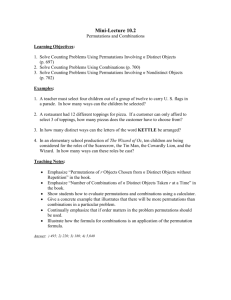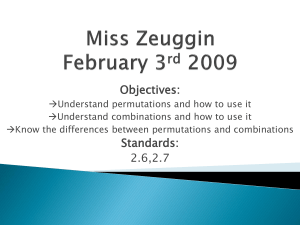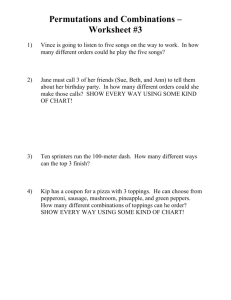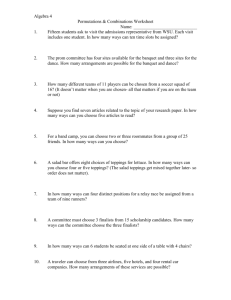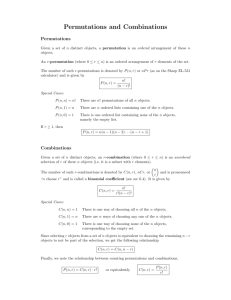Permutations & Combinations Worksheet: Practice Problems
advertisement
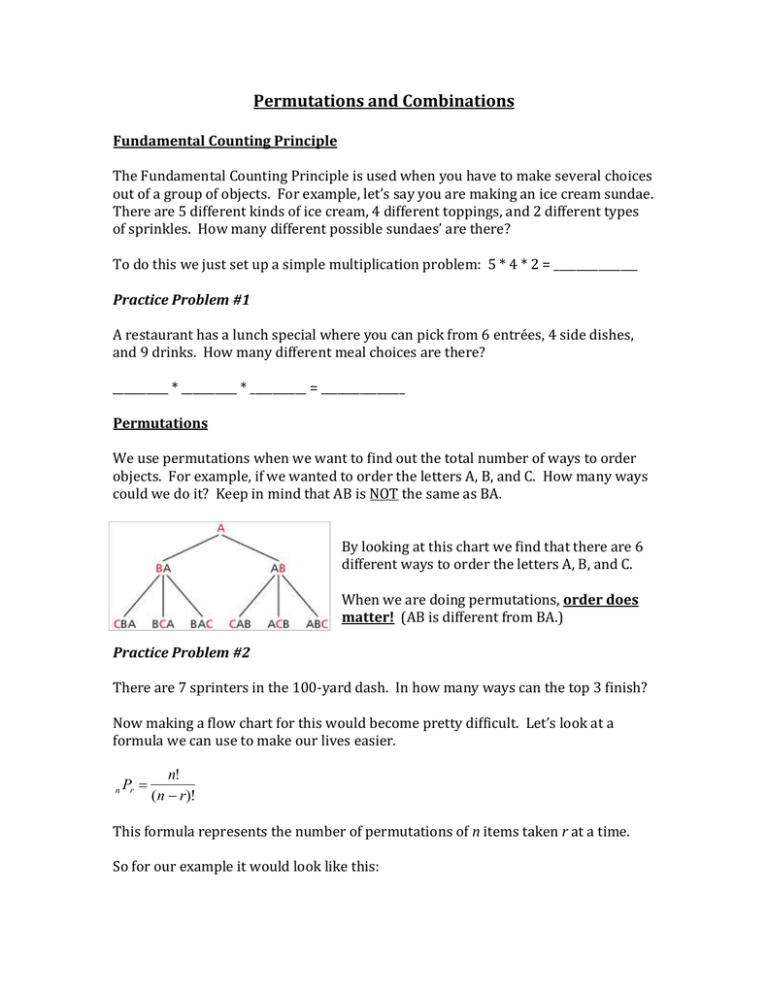
Permutations and Combinations Fundamental Counting Principle The Fundamental Counting Principle is used when you have to make several choices out of a group of objects. For example, let’s say you are making an ice cream sundae. There are 5 different kinds of ice cream, 4 different toppings, and 2 different types of sprinkles. How many different possible sundaes’ are there? To do this we just set up a simple multiplication problem: 5 * 4 * 2 = _______________ Practice Problem #1 A restaurant has a lunch special where you can pick from 6 entrées, 4 side dishes, and 9 drinks. How many different meal choices are there? __________ * __________ * __________ = _______________ Permutations We use permutations when we want to find out the total number of ways to order objects. For example, if we wanted to order the letters A, B, and C. How many ways could we do it? Keep in mind that AB is NOT the same as BA. By looking at this chart we find that there are 6 different ways to order the letters A, B, and C. When we are doing permutations, order does matter! (AB is different from BA.) Practice Problem #2 There are 7 sprinters in the 100-yard dash. In how many ways can the top 3 finish? Now making a flow chart for this would become pretty difficult. Let’s look at a formula we can use to make our lives easier. n Pr n! (n r)! This formula represents the number of permutations of n items taken r at a time. So for our example it would look like this: 7 P3 7 6 5 4 3 2 1 7! 7 6 5 = __________ 4 3 2 1 (7 3)! Combinations Lastly, we use combinations when we want to group items together. Unlike with permutations, order does not matter! For example the group of ABC is the same as BAC, CAB, ACB, etc. This means that when we deal with combinations there will be fewer ways to select items. Here is the formula we will use for combinations. It’s very similar to the permutation formula but there are some slight differences. n Cr n! r!(n r)! Practice Problem #3 Katie is going to adopt kittens from a litter of 11. How many ways can she choose a group of 3 kittens? Step 1: We first have to decide whether this is a permutation or a combination problem. The question you have to ask yourself is, does order matter? In this example order does not matter. The group of kittens, Smokey, Tigger, and Kitty is the same group as Tigger, Kitty, and Smokey. Step 2: Therefore we will use the combination formula. 11 C3 11! 3!(11 3)! Come show me your answer so I know you’re on the right track! You should now be able to do the following things: I can apply and use the Fundamental Counting Principle. I can apply and use Permutations. I can apply and use Combinations. I can solve problems using Permutations & Combinations. Assignment: Practice A Worksheet + Practice B Worksheet = ______________

